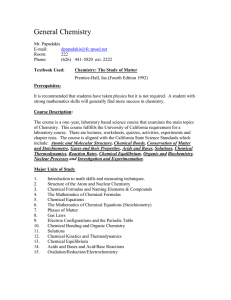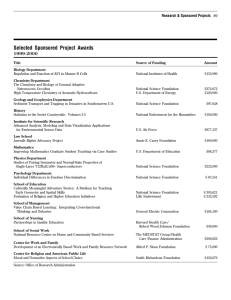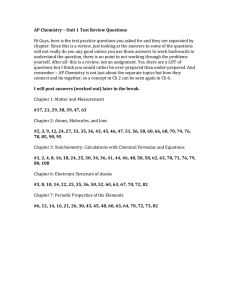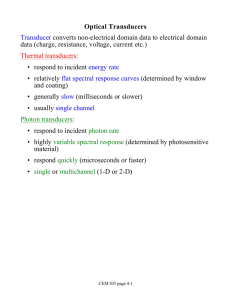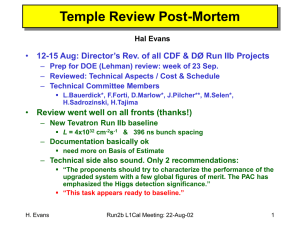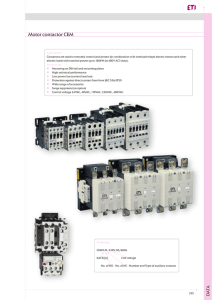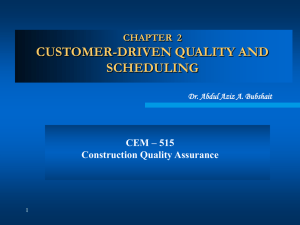CEM 161 Outline.doc
advertisement
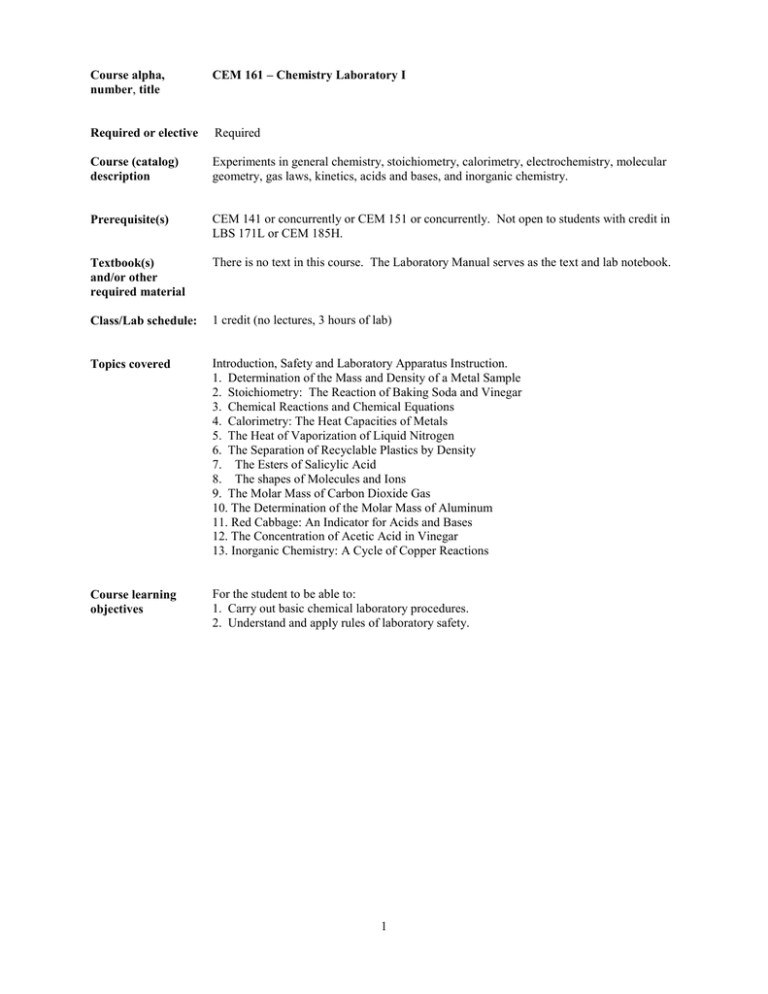
Course alpha, number, title CEM 161 – Chemistry Laboratory I Required or elective Required Course (catalog) description Experiments in general chemistry, stoichiometry, calorimetry, electrochemistry, molecular geometry, gas laws, kinetics, acids and bases, and inorganic chemistry. Prerequisite(s) CEM 141 or concurrently or CEM 151 or concurrently. Not open to students with credit in LBS 171L or CEM 185H. Textbook(s) and/or other required material There is no text in this course. The Laboratory Manual serves as the text and lab notebook. Class/Lab schedule: 1 credit (no lectures, 3 hours of lab) Topics covered Introduction, Safety and Laboratory Apparatus Instruction. 1. Determination of the Mass and Density of a Metal Sample 2. Stoichiometry: The Reaction of Baking Soda and Vinegar 3. Chemical Reactions and Chemical Equations 4. Calorimetry: The Heat Capacities of Metals 5. The Heat of Vaporization of Liquid Nitrogen 6. The Separation of Recyclable Plastics by Density 7. The Esters of Salicylic Acid 8. The shapes of Molecules and Ions 9. The Molar Mass of Carbon Dioxide Gas 10. The Determination of the Molar Mass of Aluminum 11. Red Cabbage: An Indicator for Acids and Bases 12. The Concentration of Acetic Acid in Vinegar 13. Inorganic Chemistry: A Cycle of Copper Reactions Course learning objectives For the student to be able to: 1. Carry out basic chemical laboratory procedures. 2. Understand and apply rules of laboratory safety. 1 Relationship of course to ME program outcomes The following measurement standard is used to evaluate the relationship between the course outcomes and the educational-program outcomes: 3 = Strong Emphasis, 2 = Some Emphasis, 1 = Little or No Emphasis. (a) an ability to apply knowledge of mathematics, science, and engineering—3 (b) an ability to design and conduct experiments, as well as to analyze and interpret data—3 (c) an ability to design a system, component, or process to meet desired needs—1 (d) an ability to function on multi-disciplinary teams—1 (e) an ability to identify, formulate, and solve engineering problems—1 (f) an understanding of professional and ethical responsibility—1 (g) an ability to communicate effectively—1 (h) the broad education necessary to understand the impact of engineering solutions in a global/societal context—1 (i) a recognition of the need for and the ability to engage in life-long learning—1 (j) a knowledge of contemporary issues—1 (k) an ability to use the techniques, skills, and modern engineering tools necessary for engineering practice—1 (l) design, build, and test in mechanical systems area—1 (m) design, build, and test in thermal/fluids area—1 (n) application of advanced mathematics—1 (o) capstone design experience—1 Contribution to professional component: 100% Mathematics and Basic Science Person(s) who prepared this description Professor Michael Rathke Date of Preparation Fall 2003 2

